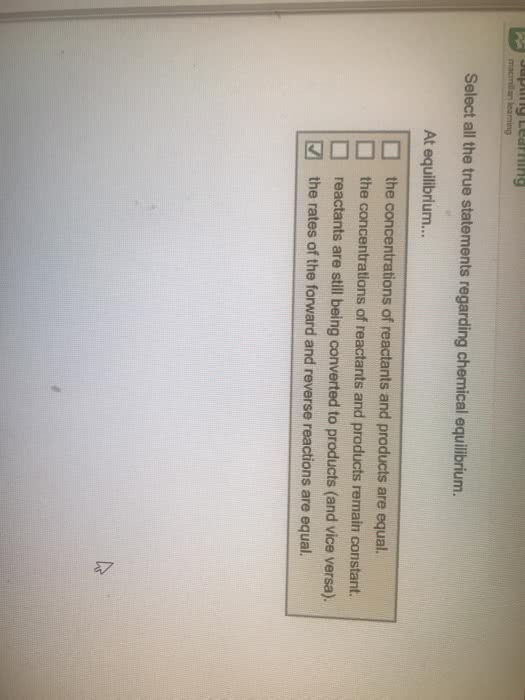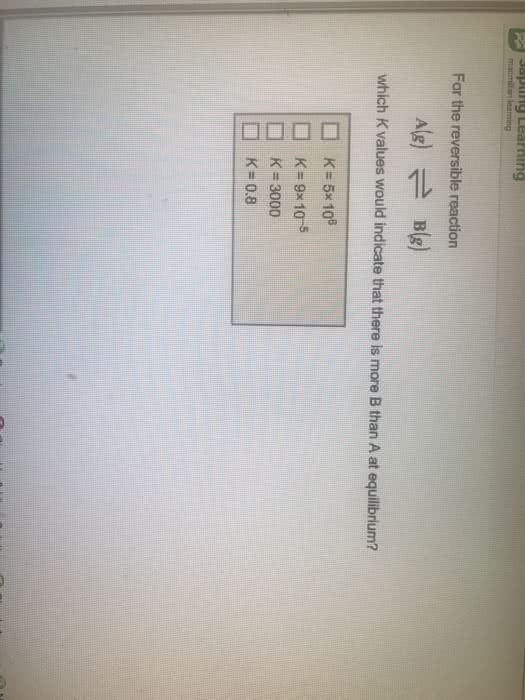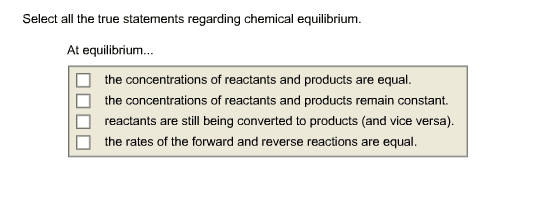CHM 2046 Chapter Notes - Chapter 14: Equilibrium Constant, Reagent, Molar Concentration
Document Summary
Dynamic equilibrium- when the rate of one process is equal to the rate of the reverse process. Products become reactants: both happen at the same rate, amount of reactants and products remain constant. The concentrations are not equal: the forward and reverse reactions are constantly happening. Equilibrium describes how much of the products are formed. Solid and liquid concentrations do not change and remain constant. Ex: 2 n2o5 (g) 2 n2 (g) + 5 o2 (g) Equilibrium is expressed as a ratio of products: reactants: k is . A constant for a given chemical reaction (at a given temp) As you manipulate equations, k also changes: if the equation is multiplied by a number or fraction, raise k to that power. Kx: if the equation is reversed, raise k-1, if combining equations, multiply the k-values. (k1*k2*kn) 14. 4 expressing the equilibrium constant in terms of pressure. N = moles of products moles of reactants (only for gases)





